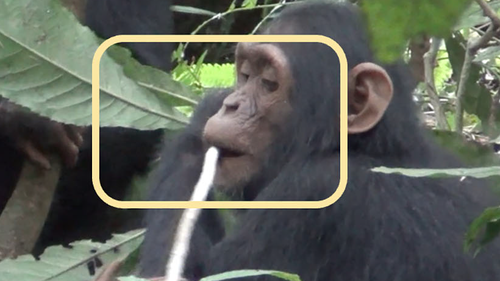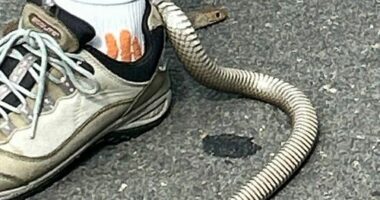Share this @internewscast.com
Experts observing chimpanzee groups in Uganda’s Budongo Forest discovered that these primates assisted each other in caring for wounds and maintaining hygiene. These behaviors might offer insights into the evolution of human healthcare concepts.
Interestingly, certain chimpanzees employed freshly chewed leaves from plants that are recognized for traditional medicinal purposes to heal both their own injuries and those of others in their group.
Scientists noted that the chimpanzees assisted fellow chimps, regardless of genetic relation, despite the possible danger of exposure to infections.

Although chimpanzees elsewhere have been observed helping other community members with medical problems, scientists say the persistence of this behaviour in Budongo could suggest that medical care among chimpanzees is much more widespread than realised.
The scientists studied two communities of chimpanzees in the Budongo Forest â Sonso and Waibira.
Like all chimpanzees, members of these communities are vulnerable to injuries, whether caused by fights, accidents, or snares set by humans.
About 40 per cent of all individuals in Sonso have been seen with snare injuries.

During their direct observational periods, the scientists recorded 12 injuries in Sonso, all of which were likely caused by within-group conflicts.
In Waibira, five chimpanzees were injured â one female by a snare, and four males in fights.
The researchers also identified more cases of care in Sonso than in Waibira.
“This likely stems from several factors, including possible differences in social hierarchy stability or greater observation opportunities in the more thoroughly habituated Sonso community,” article author Dr Elodie Freymann of the University of Oxford said.
The researchers documented 41 cases of care overall: seven cases of care for others and 34 cases of self-care.

These cases often included several different care behaviours, which might be treating different aspects of a wound, or might reflect a chimpanzee’s personal preferences.
“Chimpanzee wound care encompasses several techniques: direct wound licking, which removes debris and potentially applies antimicrobial compounds in saliva; finger licking followed by wound pressing; leaf-dabbing; and chewing plant materials and applying them directly to wounds,” Freymann said.
“All chimpanzees mentioned in our tables showed recovery from wounds, though of course we don’t know what the outcome would have been had they not done anything about their injuries.
“We also documented hygiene behaviors, including the cleaning of genitals with leaves after mating and wiping the anus with leaves after defecation â practices that may help prevent infections.”

‘Incredible’ hidden giant anaconda species found in remote Amazon
The scientists call for more research into the social and ecological contexts in which care takes place, and which individuals give and receive care.
One possibility is that the high risk of injury and death which Budongo chimpanzees all face from snares could increase the likelihood that these chimpanzees care for each other’s wounds, but the researchers said more data was needed.













